AI chatbots gives a perception of being intelligent, but intelligence is a long way away.
Uncover some of the real facts on chatbots and limitations associated with current AI chatbot platform and frameworks. The intent of the article is to help readers take informed decisions on how to design AI chatbots and workarounds with the existing chatbot implementation.
What are Chatbots?
A chatbot is a software program which carries out a conversation with a human. The conversation can be through textual methods, voice or even through recognizing human expressions.
Chatbot interactions can range from simple questions being answered like – “what is the outside temperature’, to sophisticated use cases which requires a series of dialogue to arrive at an outcome – like a chatbot for booking holiday trips or providing financial advice.
What are the technologies used to build Chatbots?
Chatbots are not a new concept. Earlier technologies using fixed set of input from user to drive conversations or scanned the input message to find keywords and lookup information/responses from database. These were mostly rules based and keyword driven, without understanding the context and meaning of the input message. Based on the input, a predefined programmed response would be provided.
With the advent of AI, Chatbots uses technologies like Natural Language processing to understand the language and intent from the input message and take corrective action. As the system tries to understand the language, users asking the same questions in multiple ways, the system is now able to understand the intent. Once the intent is identified, you can extract the interested topic from the input.
Info – Natural language processing (NLP) is a branch of AI to help systems understand, interpret and process human languages.
For instance –
Find the cheapest flight from US to UK is similar to Find me lowest air fare from US to UK.
Here the intent is – cheapest or lowest flight
Topics are – Location: From location – US, To Location UK
Action – Search flights.
An AI open source package or an AI NLP cloud service can be used to develop chatbots. Let’s refer to this as chatbot implementation for future references. We would talk about chatbot implementation in detail during the course of this article
What should I keep in mind for developing an AI Chatbot?
Chatbots work well when domain is well understood by the AI system.
As the AI chatbot relies on NLP to understand the semantics of the input message, unless the NLP parser is trained on the domain, the accuracy of recognizing the intent and topics of interest would be very low or not as per acceptable criteria.
Take an example of a shopping chatbot which advises user what to buy based on the latest fashion trends.
Consider 3 queries below from a user –
Query 1 – Show me medium size trending black and white dresses for Christmas party
Query 2 – Show me white color, 3 inches platform heels
Query 3 – Find And black and white floral dress under 2000
Here the chatbot needs to understand the following
- Understand the shopping language.
- Understand the intent – It’s a shopping query
- Understand the domain – Its shopping query for apparel and shoes. (i.e. there can be multiple domains – grocery, electronics, books etc.)
- Understand clothing shopping category and terminology –
- Category – dresses, sandals etc.
- Variants – sizes (medium/large etc.), color (various colors and combinations like black and white), heel size (3 inches. etc.)
- Prices and ranges – 2000, etc.
- Brands like – AND, Nike etc.
Out of the box, any chatbot implementation wouldn’t understand the domain. You need to train the chatbot on the custom domain to recognize the context and the language.
For instance, out of the box NLP parsers would not recognize “AND” as a brand. Let’s inspect how well some of the leading Cloud AI NLP services recognizes the sentence – “Find And black and white floral dress under 2000”
Here is a snapshot from Watson NLP (out of the box) implementation.
Figure: Keywords from Watson NLP
Figure: Concepts from Watson NLP
Figure: Part of Speech from Watson NLP
As you see, the Watson NLP recognizes “white floral dress” as keywords and “Black” as concept. Ideally it should have recognized “black and white” as concept as we are looking for a combination of these colors.
The dress could also be a concept, as its quite generic. The floral can be keyword which has a dependency on dress. Identifying all the facts in the right way it’s important, as based on the facts you would convert this to a search query to get the required details from the data store (or from respective search indexes).
For instance, the above should result as –
Color = “black and white”
Category = “Dress”
Gender = “Female”
Price < 2000
Pattern = “floral” or Keyword within category = “floral”
(where color, category, gender, price, pattern are all the columns or indexes you are searching against.)
The Watson NLP parser doesn’t recognize “And” as brand and recognizes “And” as a conjunction (“CCONJ”) in part of speech, which is expected as its not trained on it.
Let’s check how Google NP classifies this sentence. Here is a snapshot from Google NLP.
Figure: Entity classification from Google NLP
Figure: Part of Speech from Google NLP
As you see from above figures, Google NLP identify the entity as “dress”, but doesn’t identify the colors “black and white”. With respect to part of speed tagging, its similar to Watson NLP, recognizing “And” and as conjunction (“CONJ”) and not as brand.
The above is true for any of the available NLP implementation (that is available today), where it fails to understand all the correct context of the sentence. The use case was pretty simple. Even if we train the NLP implementation on these examples, it would fall short as you need to plugin specific NLP rules for such conditions to get the desired results. As the complexity and context that needs to be inferred increases, training would also not help as you can never come up with a generalized model for such conditions. That is the single most limitation if we only rely on today’s generation of NLP implementation.
Based on my experience on building a sophisticated shopping personalized advisor, none of the out of the box AI NLP implementation fitted the requirements. A simple scenario is these 3 sets of sentences – “black and white dress”, “and black dress” and “blue jeans and white shirt”. In all these 3 examples, the use of word “and” means different meaning. In the first case, its represents a combined color ““black and white”, in second instance “and” represent a brand and in third instance two queries joined by a conjunction (i.e. and). Even with required training, a generalizing model was not possible with any of the available solutions. These are just one of the many examples I am highlighting. Imagine the complexity when dealing with medical literature. In our case, we ended up building our domain specific NLP implementation which worked for all such scenarios.
In general, while designing chatbot solutions, start with a closed domain and what kind of questions the chatbot needs to answer. Don’t start building a general purpose chatbot from start, as it would be difficult to get the required accuracy. Secondly, if you are using any cloud vendor or third party implementation, ensure your use cases can be simply solved by the default implementation or you need to build components to work around it.
What are typical use cases for building a chatbot?
In today’s digital age, customers are looking for instant information and speedy resolution to all their queries.
Chatbots provides an efficient way to stay connected with end customers directly and provides information at their fingertips – be it through a messaging chat application or through voice enabled service like Alexa and Google Home.
Some of the typical use cases are listed below –
- Ability to know your customers and directly interact with them over various channels, like retail brands directly connecting to their end customers.
- Improve customer engagement, interaction and provide speedy resolution.
- Scaling customer service operations by providing relevant information 24 by 7 at customer’s finger trip.
- Understand customers and their preferences better to provide hyper personalized service, like a personal assistant.
- Provide an ability to interact with connected devices, like Smart Homes in a natural and intuitive way.
- Provide expert guidance, like a financial assistant chatbot providing investment suggestions.
What are the high level steps for building an AI chatbot?
Following are the high level steps to build an AI chatbot
- Define the business use case and end goal for building the chatbot.
- Define Conversation interfaces
- Define what kind of questions needs to be answered
- Define conversation/dialog flow on how various interaction would happen with the user. For instance, booking a flight is one dialog flow, booking a hotel is another dialog flow, etc. Within a dialog flow, what would be interaction flow with the user.
- Define how to capture the feedback from the user regarding the answers provided. Feedback can be explicit, like the user rating the answer or implicit on how much time a user spends looking at the answer and follow up activity after that.
- Question / Answer exploration
- Identify existing sources (if any) for questions, like website FAQ, call center logs etc.
- Create representation of Questions that would be asked.
- Create variations of questions for training the chatbot to understand the language and be able to generalize well.
- Identify source of answers – whether it would be programmed response or coming from internal knowledge sources and documents (like available technical manuals for troubleshooting device related queries)
- Pick up a Technology approach
In this step, you will decide how to implement the chatbot. There are 2 approaches – building your own chatbot implementation using available frameworks (like TensorFlow, NLP implementations like NLPTK) and custom components or using an existing platform service like Google NLP, Amazon Lex or Azure Bot service.
In both the approaches, you would need the train the chatbot implementation to recognize the question intent, domain and the language. Existing platform services have simplified this process by providing required utilities that makes it easier to create chatbots. For more details, kindly refer to “How do you build chatbot using chatbot platforms”.
- Pick up a delivery channel
In this step, you will decide how to expose the chatbot to end users through the required channel. The channel can be web, mobiles or voice enabled devices.
Your chat implementation would typically expose an API (to ask questions and get responses) which can be called by a channel implementation. You can also release your chatbot implementation over third party services like Facebook Messenger or voice enabled services like Amazon Alexa. For more details, kindly refer to “How do you Integrate chatbots with third party services”.
- Release, Monitoring and Feedback
Once the chatbot is released, you would typically store all the user interactions to help you analyze the user behavior and their preferences better. The user and behavior data in turn would be used to provide a more personalized service. How would you use this new user information, depends on your use case. For instance, if a travel chatbot is recommending a new holiday trip, it can suggest options based on your last trip interaction. You need a build a recommendation system that looks at the history of the user interaction in the past and suggest options. For details on how to build recommendation systems, kindly refer to Recommendations Chapter of Real AI book.
Another important point is to capture feedback from the user at regular intervals to understand if chatbot is providing the right information. The feedback captured will be used to improve the chatbot implementation, which can lead to training the chatbot implementation with new information. For instance, your chatbot may not be trained on recognizing certain entities and concepts and as a result the responses would not be proper. You need to plan for building and releasing incremental models based on the feedback.
How do you Integrate chatbots with third party services?
As part of your chatbot technology implementation, your chat implementation would typically expose an API (to ask questions and get responses) which can be called by a channel implementation
The channel can be web, mobiles or voice enabled devices. If you already have an existing mobile application, you can embed this as part of the mobile application.
You can also release your chatbot implementation through third party chat enabled services like Facebook messaging application or through voice enable service like Amazon Alexa as a skill.
All of these chat enabled services provides a framework to plugin your own implementation. The framework provides hooks or code interceptors for intercepting the chat message. You need to extend their framework and plugin your own implementation For example, if a user asks a question on Facebook messenger, the question would be handed to your chat implementation through predefined hooks. You would process the message and send the response back, which would be sent back to the user.
Similarly, if you need to make your chatbot available over Alexa, you need to wrap it as an Alexa Skill using Alexa Skills Kit interface. Once your skill is enabled in Alexa by the user, any voice messages would be intercepted by your skill and you can provide the required implementation and responses as per your chatbot.
For more details, kindly refer to “How do you build chatbot using chatbot platforms”.
How do you build chatbot using chatbot platforms?
A chatbot platform provides you a set of services to design, develop and deploy your chatbot. They provide you with a framework and guided set of utilities to build a chatbot.
Cloud providers like AWS, Azure, IBM, Google Cloud provides you a set of services that help you to create conversations, understand the conversation language using NLP techniques, hooks to take required action and deliver the solution via APIs.
The fundamental approach adopted by each of these providers is same. They allow developers to
- Design conversation flows using some visual interface or tooling provided by cloud provider
- Through these conversation flows you
- Provide a set of questions and multiple ways you can ask the same question
- Define what is the Intent of the question. For example, for the question -” Find cheapest flight from US to UK”, the intent is to find the lowest air fare.
- What entities of interest to extract from the Intent. The chatbot provider needs to be made aware of these entities. In above example, entities are country list -, UK, US. These entities can be generic which are recognized automatically by the cloud provider or the cloud provider provides a mechanism where you can provide or train these entities (including synonyms etc.) through some tooling provided by the cloud provider.
- Use the entities extracted to carry out the required action for the intent. For instance, in the above example, call a flight API service providing UK and US as “from” and “to” locations.
- Provide the response.
- Test and expose the chatbot through an endpoint
- The cloud vendor typically provides an ability to expose the functionality for your chatbot through an endpoint, like a REST API.
The above technology work for simple to medium complexity flow – like FAQ, pointed questions and answers for customer query, fixed step of steps (booking a cab etc.) etc. Anything which requires sophisticated handling of queries, like the shopping advisor example, needs to be custom developed using NLP and other techniques.
Info – Microsoft has a QnA service (https://www.qnamaker.ai) that lets you create bot from FAQ.
What is not real about Chatbots?
Chatbot are examples of Weak AI. Current generation of chatbot can be thought of smart dialog systems driven through techniques like NLP and fixed conversation flows.
Out of the box, a chatbot doesn’t understand any domain. We need to train the chatbot to understand the domain. Also, based on the complexity of the domain, you would incrementally train and add subdomains. For instance, a chatbot helping you book a cab is an example of fixed domain, while a chatbot helping assisting doctors for cancer treatment would be trained on various types of cancer incrementally. As mentioned in the shopping advisor example, understanding the meaning of the same word in different context is difficult for the current generation of NLP implementation to resolve and you need to rely on custom techniques to handle such conditions.
Now, let’s look at some marketing gimmicks around AI chatbots –
- INGEST AND KNOW IT ALL chatbots – These are chatbots being marketed where you can ingest millions of documents, like medical literature and can ask questions, which can provide expert assistance like diagnosis of diseases. Such kinds of systems unless trained appropriately will never provide desired accuracy.
By appropriately, I mean it can take years to train these systems. The fundamental problem with these systems is that, they still don’t understand the complete language and complexity of the domain. You typically end up with custom domain adoptions and infinity language rules, which is definitely not smart enough to manage in longer run. The predictions of such systems are usually not accurate.
- Self learning chatbots – How often you have heard this terminology called self learning chatbots. This again is a misconception, where chatbots learns on its own. You have to train chatbot on what you what the chatbot to learn. Usually you would capture the user behavior details through their interaction with the chatbot application. This would include capturing user analytics information like capturing his likes or dislikes in some way, either through explicit or implicit means. Explicit information can be a user rating a product and implicit can be the time a user spent looking at a response.
Once you know the user well and have its data, its becomes a recommendation problem on what you want to recommend to the user. So, you end you building a recommendation algorithm to recommend something. For instance, for a fintech application, this would mean recommending similar stocks based on what stock he views regularly or his portfolio.
Different domain and use cases, would need different recommendation algorithms and that needs to be developed as part of the chatbot. However, the learning is boxed, for instance if you have a chatbot which assist you in booking restaurants, it can recommend you similar restaurants, but it can’t recommend your places to stay, it only knows about your restaurants taste.
Well, someone can build a recommendation system which tracks what users eat and where they stay and then try to come up with a correlation which provide a recommendation, as the system now knows – “user eating XYZ, most likely are adventurous. So, recommend some trekking place.” Again, in this case, recommendation is boxed on what you know and what you want to recommend. I don’t know if any such hypotheses exist, but only through data and feedback that can be inferred. The point is, all of these hypotheses, data and feedback needs to be designed and developed, and saying chatbots learns on its own it’s quite misleading.
- General purpose, generative chatbots – A chatbot which is capable of learning new concepts from scratch and provide responses like Human. As it learns from open domain, the chatbots would start behaving similar to the famous Microsoft Tay chatbot (which was forced to shut down on its launch day), as it started learning unwanted details from tweets and started posting inflammatory and offensive tweets. This is a classic example of what I quoted earlier – “AI can learn, but can’t think”. The generative chatbots are formulating the response based on probability of words and creating a grammatically correct sentence, without understanding the real meaning of it.
As I mentioned earlier, the first focus should be on getting domain specific chatbots right and with the current techniques we are far away from realizing the vision.
Will chatbots make human agents obsolete?
To answer this question, lets understand what functionality chatbots currently provide.
Current chatbot implementation do well for handling fixed set of dialogs with the user, repetitive tasks and certain initial aspects of customer service tasks. Wherever there is a fixed set of processes and flows to automate, chatbot can be used to provide 24 * 7 support for any queries. If human expertise is used for answering basic set of questions where answers are readily available, it would be eventually be replaced.
But in real-life scenarios, most of the conversation usually doesn’t follow a fixed flow paradigm. But if the conversation moves from basic questions to questions which need further analysis, or the topic of conversation gets changed, you need a sophisticated chatbot implementation to take care of various conversation flows, identify the context switch, identify intents which your chatbot may not be aware of and create queries to find that information from your knowledge source. You are now moving from fixed set of flows to more dynamic flows which needs to be interpreted by your chatbot. Building such complex chatbot implementations requires sophisticated domain specific adoption using machine learning techniques and custom solutions. Current out of the box chatbot services fall short of building such chatbot implementations.
And even if you have all the data in the world at your disposal, infinite processing and computation power, using the current generation technology and research, you can never build a system that can compete with an expert human in the field. Taking even a 5 year horizon from now, I don’t think we can develop such a level of intelligent chatbots.
For instance, can chatbots or an assistant, help doctor to recommend cancer treatments accurately and consistently. The answer is No.
The information provided from chatbot can aid doctors to take a clue from the answer provided, it may be right or wrong. You can never certify this. The chatbot would always act as assistance to an expert person to get some job done. Ultimately, these systems are throwing a bunch of answers based on some probabilities. The answers are limited to what you have fed into the system, you can’t infer a new knowledge on the fly or can correlate information like a human expert to come to any conclusion.
While, there are research going on to use deep neural nets for conversation flows, we are still quite far away of building truly conversational interfaces which understands the nitty-gritty of language and domain. Also, the answers provided needed to be explainable and unless you have a way to backtrack on why a particular answer was provided, such deep neural systems can’t be used for use cases which requires auditability and explainability.
In short, enjoy the smart chatbots that gives a perception on being intelligent, but intelligence is a long way away.
Can AI generate dynamic responses to questions
You can use deep learning to build a chatbot. Various deep learning architectures are available to solve specific variety of use cases. For instance, for computer vision (i.e. image recognition) you would use a convolutional neural network as the starting point, for language translation or text generation you would go with recurrent neural network and so on.
For understanding chat conversations, you would start with a variant of recurrent neural network. You will build a sequence to sequence model. A sequence to sequence model in simple words consist of 2 components, the first component (encoder) tries to understand context of input sentence through its hidden layers and the second component (decoder) takes in the output from encoder and generates the response.
The above techniques require you to have a large set of training data, containing questions and responses. The technique works in a closed domain, but as the responses are dynamic in nature, putting it directly to your end users can be a bit risky. Secondly, these techniques don’t work when you want to interpret the input sentence to extract the information and formulate a response on your own, like the shopping advisor query use case that we discussed above.
In case of open ended domain, the chatbots would start behaving similar to Microsoft Tay chatbot example I gave earlier.
Tip – With RNNs, the response/answer is dependent on its previous states (or earlier states). So, for deep conversational use case, where context needs to be available, the RNNs doesn’t work. You need to employ variants on RNN called LSTM. (Long Short Term Memory networks). There are a lot of research going around this area. Going through various deep learning architecture is outside the scope of the book.
SUMMARY
The current generation of chatbots are weak form on AI, which offers an ability to understand the intent of the input message/question. In order for chatbot systems to understand the intent, it needs to be trained with the corresponding domain. You can ask the same question in multiple ways and the chatbot implementation can still infer the intent.
For dialogs, the current technology offers defining fixed conversation flows, so the interactions are boxed and finite.
Chatbots do well for managing productivity and certain aspects of customer service tasks. However, as the complexity of domain increases, current technology falls short, as even after sufficient training you would not get the required level of accuracy. You would need to rely on a combination of other machine language technologies and solutions like rules, inferences, custom domain metadata to get the solution delivered. These become a one-off solution, which becomes difficult to generalize. For some cases, even the one-off solution would be very complex, like building an advisor for recommending cancer treatments accurately and consistently.
While, there are research going on using deep neural nets, we are still quite far away from building a true conversational chatbot which understands the nitty-gritty of language and domain. Also, the answers provided needed to be explainable and unless you have a way to backtrack on why a particular answer was provided, such deep neural systems can’t be used for use cases which requires auditability and explainability.
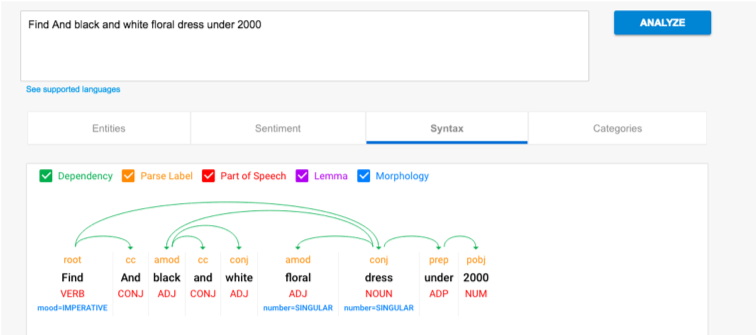




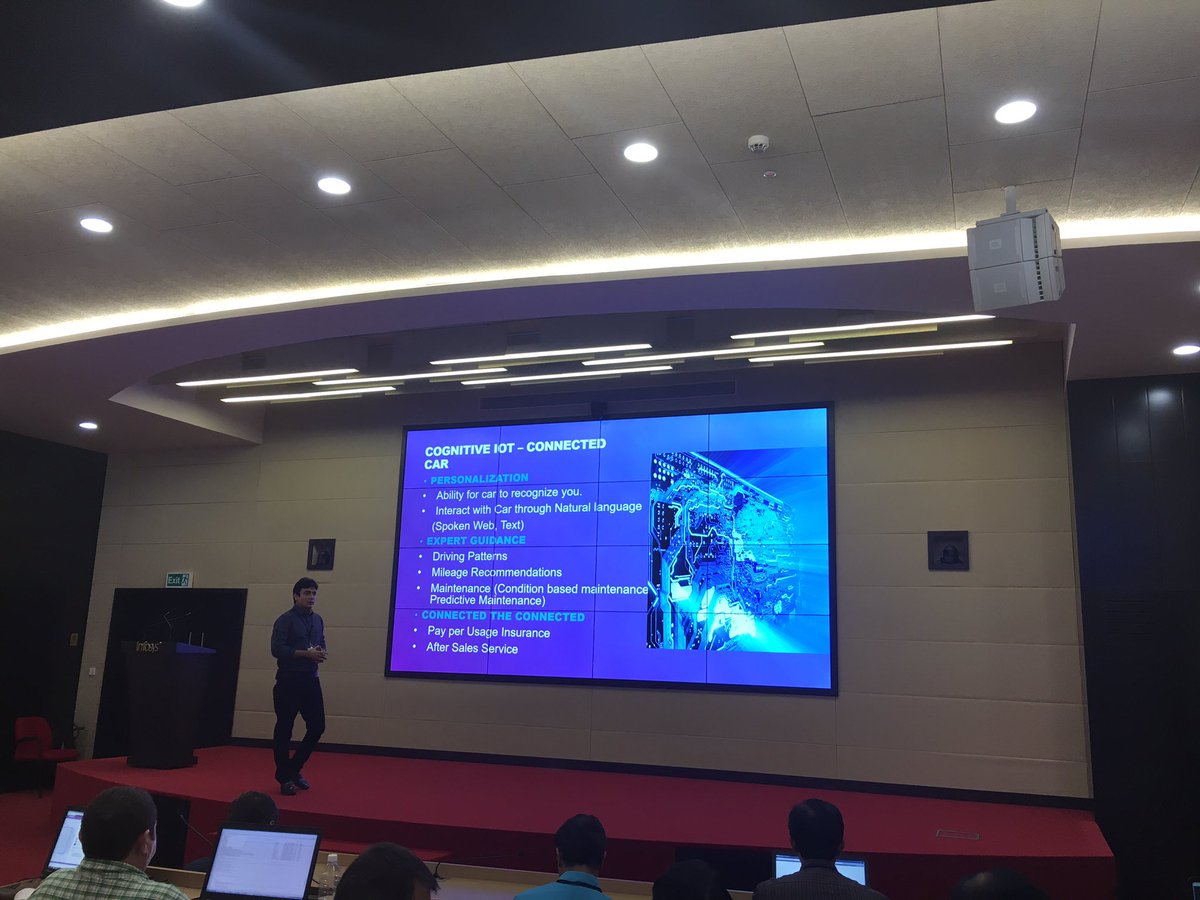

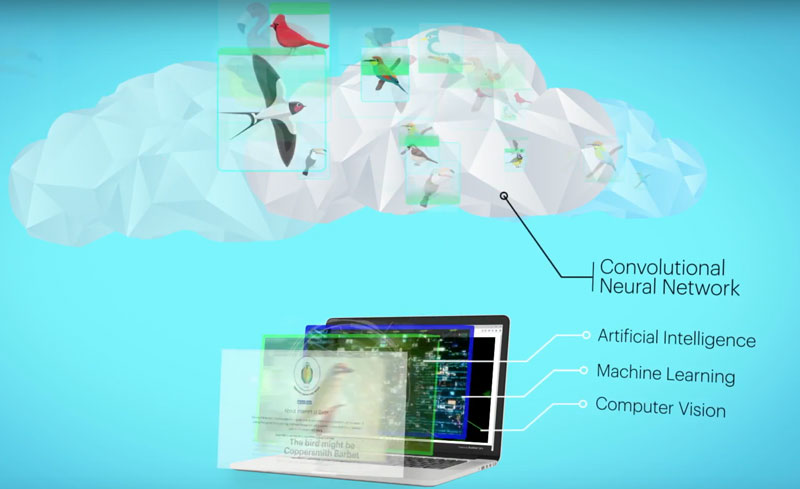
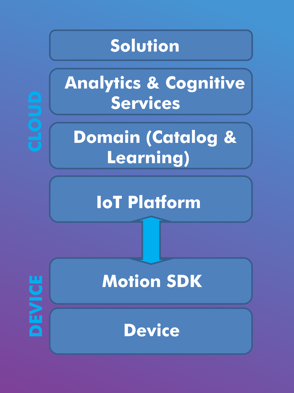
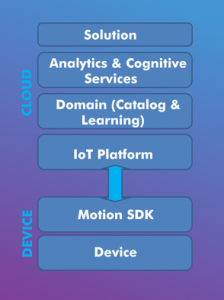 For an architecture stack perspective, you have the low powered embedded device installed inside the ball or embedded as part of the design and manufacturing process, its provides at least 6 Axis combo sensor for accelerometer and gyroscopes reading to identify any movement in 3d space. A Motion SDK is installed on top of the device to identify any movements in general and communicate the reading to the cloud. In cloud, we have the learning model or the training data. Basically, we would ask an expert batsman to bat and play various expert strokes like cover drive etc. and record their movements from sensors (bats/pads etc) as well as visuals (postures etc), this would be used as the training / test data and comparison would be made against it. As we are comparing 3D models, machine learning approaches like dimension reduction can be employed ( and many new innovation approaches) to compare two motion and predict the similarity. Similar training data is captured from an expert baller, along with other conceptual information like hand movements, pitch angles etc.
For an architecture stack perspective, you have the low powered embedded device installed inside the ball or embedded as part of the design and manufacturing process, its provides at least 6 Axis combo sensor for accelerometer and gyroscopes reading to identify any movement in 3d space. A Motion SDK is installed on top of the device to identify any movements in general and communicate the reading to the cloud. In cloud, we have the learning model or the training data. Basically, we would ask an expert batsman to bat and play various expert strokes like cover drive etc. and record their movements from sensors (bats/pads etc) as well as visuals (postures etc), this would be used as the training / test data and comparison would be made against it. As we are comparing 3D models, machine learning approaches like dimension reduction can be employed ( and many new innovation approaches) to compare two motion and predict the similarity. Similar training data is captured from an expert baller, along with other conceptual information like hand movements, pitch angles etc.
